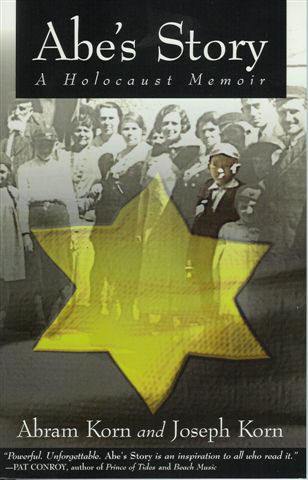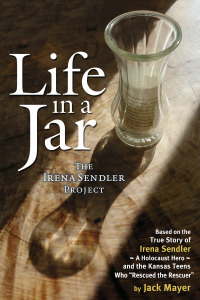Return to “The Final Solution” | Facts
The Extermination Factory – Auschwitz
The extermination plant with the most advanced design anywhere in the world consisted of two large crematoria/gas chambers and two smaller ones. Crematoria Four and Five were built on the surface of the ground. Crematoria Two and Three had subterranean gas chambers and reception areas. They were about 102 meters long by 51 meters across. The basement consisted of two main rooms – the undressing area, which also served as a mortuary, and a gas chamber. Victims climbed down the steps into the basement. Those who could not walk were pushed down a concrete slide. The gas chamber, about 225 square meters, looked like a large communal bathroom with shower heads:
The Zyklon B gas crystals were inserted through openings into the hollow pillars made of sheet metal. They were perforated at regular intervals and inside them a spiral ran from top to bottom in order to ensure as even a distribution of the granular crystals as possible. Mounted on the ceiling was a large number of dummy showers made of metal.
The largest room in the factory, the changing chambers, accommodated 1,000 people. Notices throughout the room contributed to a “cunning . . . and clumsy deception” – telling victims they were in disinfection rooms, urging cleanliness, reminding them to remember their clothing hook number.[39]
The extermination plant contained a hair-drying loft run by fifteen Orthodox Jews. Spread over the floor, noticed Muller from the extermination staff, was women’s hair of every color:
Washing lines were strung across the room. Pegged on these lines like wet washing were further batches of hair which had first been washed in a solution of ammonium chloride. When the hair was nearly dry, it was spread on the warm floor to finish off. Finally it was combed out by prisoners and put into paper bags.[40]
The SS set up a gold-melting room in the plant. There two dental technicians soaked the teeth for hours in acid to remove bone and flesh, and used a blowtorch to melt the gold into molds. They produced as much as 5 to 10 kilos a day.
As in Treblinka, the stoking gangs sorted out the bodies into combustibility categories: strong men, women, children, and Musselmans. The SS staff had performed earlier experiments to find ways to economize on fuel – with the help of Topf and Sons, civilian experts:
In the course of these experiments corpses were selected according to different criteria and the cremated. Thus the corpses of two Musselmans were cremated together with those of two children or the bodies of two well-nourished men together with that of an emaciated woman, each load consisting of three, or sometimes, four bodies. Members of these groups were especially interested in the amount of coke required to burn corpses of any particular category, and in the time it took to cremate them. During these macabre experiments different kinds of coke were used and the results carefully recorded.
Afterwards, all corpses were divided into the above-mentioned categories, the criterion being the amount of coke required to reduce them to ashes. Thus it was decreed that the most economical and fuel-saving procedure would be to burn the bodies of a well-nourished man and an emaciated woman, or vice versa, together with that of a child, because, as the experiments had established, in this combination, once they had caught fire, the dead would continue to burn without any further coke being required.[41]
As early as June 13, 1943, all was not well with the new installation. The Central SS Construction Management of Auschwitz sent a letter to a German equipment firm urging the completion of carpentry work in the new crematoria. The chief requested the delivery without delay of the doors for the crematoria, “which [are] urgently needed for the execution of the special measures; otherwise, the progress of the construction will be jeopardized.” In addition, he demanded the completion of the windows for the reception building. If the carpentry work could not be done, building operations would have to be suspended for the winter. Eventually the ovens seemed to fall apart. Crematorium Four failed completely after a short time and Crematoria Five had to be shut down repeatedly.[42]
The plans for the crematoria have been preserved by an architect who stole them from the Birkenau plant. The one-story buildings looked like large bakeries with steep roofs and dormer windows. The underground gas chambers rose 51 centimeters above the ground to form a grassy terrace. No one would know at first glance what they were. Crematoria Two and Three were close to the camp and visible. Pine trees and birches hid crematoria Four and Five. Around the crematoria lay large piles of wood for burning the corpses in the nearby pits. All chambers had doors with thick observation windows. In 1942 and 1943 alone those chambers used 27 tons of Cyclone B. The gas chambers and the crematoria of Auschwitz were called “special installations,” “bath houses,” and “corpse cellars.”[43]
Each day the trains rolled into the camp through the passageway constructed in the far gate, down one of three tracks to the selection platform. As they fell out of the trains, the victims were sent one way or another, with tearful parting scenes. The procession moved to the crematoria yard where the SS told the Jews they were going to take disinfection baths. An orchestra of attractive women played gay tunes from operas and light marches. Then to the dressing room or reception center with numbered clothing pegs driven into the walls. The SS ordered the victims to undress and to remember their numbers. Sometimes they gave them towels. Then the SS drove the victims through the corridor to the heated gas chamber. The heating was provided not for the comfort of the prisoners but to create a better setting for the evaporation of gas. The gas squads packed the 2,000 victims into the room. From the ceiling hung imitation shower heads. The doors were closed, the air was pumped out, and the gas poured in. Cyclone B, or hydrogen cyanide, is a very poisonous gas that causes death by internal suffocation. In sufficient concentrations, it causes death almost immediately. But the SS did not bother to calculate the proper quantities, so death took anywhere from three to twenty minutes. While the victims were dying, the SS witched through the peepholes.
When they opened the doors, they found the victims in half-sitting positions in a towerlike pile. Most were pink, others were covered with green spots. Some had foam on their lips, while others bleeding from the nose. Many had their eyes open. The majority were packed near the doors. The squads in special clothing moved in with hooks to pull the bodies off of each other.
The SS physicians and scientists monitored the selection and the gassing, watching the procedure through the special airtight door. The doors could not be opened until the doctor gave the sign that all victims were dead. The doctors assumed their monitoring of the killings on a rotating basis.[44]
Two German firms, Tesch/Stabenow and Degesch, produced Cyclone B gas after they acquired the patent from Farben. Tesch supplied two tons a month, and Degesch three quarters of a ton. The firms that produced the gas already had extensive experience in fumigation. “In short, this industry used very powerful gases to exterminate rodents and insects in enclosed spaces; that it should now have become involved in an operation to kill off Jews by the hundreds of thousands is not mere accident.”[45] After the war the directors of the firms insisted that they had sold their products for fumigation purposes and did not know they were being used on humans. But the prosecutors found letters from Tesch not only offering to supply the gas crystals but also advising how to use the ventilating and heating equipment. Hoess testified that the Tesch directors could not help but know of the use for their product because they sold him enough to annihilate two million people. Two Tesch partners were sentenced to death in 1946 and hanged. The director of Degesch received five years in prison.
The scientifically planned crematoria should have been able to handle the total project, but they could not. The whole complex had forty-six retorts, each with the capacity for three to five persons. The burning in a retort lasted about half an hour. It took an hour a day to clean them out. Thus it was theoretically possible to cremate about 12,000 corpses in twenty four hours or 4,380,000 a year. But the well-constructed crematoria fell far behind at a number of camps, and especially at Auschwitz in 1944. In August the total cremation reached a peak one day of 24,000, but still a bottleneck occurred. Camp authorities needed an economic and fast method of corpse disposal, so they again dug six huge pits beside Crematorium Five and reopened old pits in the wood.
Thus, late in 1944, pit burning became the chief method of corpse disposal. The pits had indentations at one end from which human fat drained off. To keep the pits burning, the stokers poured oil, alcohol, and large quantities of boiling human fat over the bodies:
The sizzling fat was scooped out with buckets on a long curved rod and poured all over the pit causing flames to leap up amid much crackling and hissing. . .. The air reeked of oil, fat, benzole and burnt flesh.
Return to “The Final Solution” | Facts



